History/driving report originally published in Special Interest Autos August 1990
Timing is everything, or at least as important as talent or skill. Being there at the right time means as much as having the right stuff. Just ask any Acapulco cliff diver. Or Carroll Shelby.
Shelby freely admits that he wasn’t the first to come up with combining American horsepower with a lightweight European chassis, having in fact driven an Allard J2X early in his racing career, later calling it a “jet-propelled kiddie car” that “once you got to understand its temperament and master some of its oddball traits, it took something costing twice as much to beat you.”
It seems it was a lesson he never forgot. Shelby, of course, went on to a brilliant sports car racing career, driving Aston Martins for John Wyer, driving on the Porsche factory team, driving various private Ferraris (Enzo himself wouldn’t pay Shelby to drive, which was a bone that kind of stuck in the Texan’s craw), factory Maseratis (as a direct result of Ferrari’s rebuff), Formula One cars , and winning Le Mans in an Aston in 1959. Shelby even had helped, earlier on, to set some 70 records in a factory Austin-Healey on the salt at Bonneville.
All the time – as early as 1957 or 1958 – he was thinking, though, of a lightweight sports car with a “simple American engine, a V-8 pushrod type with an output of, say 300 hp, and gobs of torque, plus a slightly more sophisticated chassis than a Corvette then had,” Shelby wrote in 1965. Not a racing “special” or sports racer, but a limited production road-going sports car that could be raced as well.
Not that there weren’t examples of those, ones that Shelby drove in competition. Winning the USAC-sponsored professional sports car championship in 1960, Shelby piloted Lance Reventlow’s Scarab and Max Balchowski’s Old Yaller II and ran against Billy Krause is Corbett-engined Jaguar D-type.
But he drove the 1960 season with nitroglycerin pills under his tongue. At 37, Shelby was suffering from angina, with pain Shelby described as “like a knife being stuck in my chest.” In October he ran his last race, the Pacific Grand Prix for Sports Cars at Laguna Seca, in the Type 61 “birdcage” Maserati belonging to Frank Harris.
With no job, little cash and poor health, Shelby turned his well-earned credentials into what he calls the financial turning point of his life, the opening of the Shelby School of High Performance Driving. One $90 ad had brought in 1400 responses, each with a dollar for information. It was the first of many like schools in existence now, an excellent example of Shelby timing.
The school was run in California, Shelby having moved there in early 1960 because that’s where all the hot rod guys were and that’s where he wanted to build his dream car. The school was largely turned over to a young fellow named Pete Brock – who would later become famous in his own right – so that Shelby could spend more time on the sports car project.
Timing. The best news Carroll Shelby ever got was that England’s Bristol Aeroplane Company had stopped making automobile engines. It was bad news for AC Cars of Thames Ditton, which had used Bristol’s BMW-derived in-line 6 as the high-performance engine option in their Ace sports car. Some cars had been built with a Rudspeed-modified English Ford Zephyr six, but the Ace, however engined, was expensive ($3,850 US East Coast port) for its level of performance and, honestly, rather dated, having debuted in 1953. Shelby had been mulling the possibility of building his own chassis, but the potential availability of the AC Ace was a godsend. Shelby no doubt knew that an Ace-Bristol won the Sports Car Club of America E Production championship in 1958 and 1959 and, after being bumped up out of E Production, garnered a National Championship in D Production in 1960. But as English AC historian John McLellan notes, “business was rather quiet on the car-building front by late 1961 at Thames Ditton.”
It was because of slow sales that the owners of AC cars, Charles and Derek Hurlock, were receptive to the proposal that arrived in an airmail letter from California in September 1961. Shelby suggested that with some “not-two-extensive modifications to the AC chassis we might drop an American V-8 into it and get really terrific performance, plus the kind of flexibility and day-to-day reliability that I had in mind.” In fact, at this point, Shelby didn’t suggest Ford specifically – he didn’t know the new lightweight small-block V-8 existed yet – having in mind Chevrolet power, or perhaps an Olds engine or the aluminum Buick V-8.
Then in October came the news of Ford’s thin-wall casting process and the new engine. “So the moment I heard about the new Ford engine,” wrote Shelby later, “I wrote a letter to Dave Evans and told him I was going to build a versatile type of sports car and needed a competitive engine.”
Evans, head of Ford’s stock-car racing program, had met Shelby only in July of that year, but he responded with an immediate phone call and an offer of a pair of 221-cubic-inch engines.
Shelby fired off a letter to Charles Hurlock telling him what had transpired (and including the dimensions of the Ford engine) and asking for Hurlock to make changes to accommodate the V-8’s torque while suggesting a few of his own.
Things started happening quickly. The Ford engine arrived in November and Dean Moon, who was working with Shelby, fell upon it, performing horsepower wizardry while Ford was making a change of its own, punching out the engine to a “high performance” 260 c.i.d. One of these was shipped to Thames Ditton, arriving there by January 1962. Shelby also, as he put it, “scraped together” the airfare for the trip to England to work with AC engineers in adapting the engine to the Ace chassis.
It would be more than a simple engine swap. In fact, the engine replacement was easiest part. The frame of the AC was basic, just a pair of three-inch tubes running lengthwise, with cross members and bits and pieces welded on to hold the engine, suspension, body and other necessary parts in place. The Ford V-8, which weighed only about 15 pounds more than the Bristol two-liter but was more compact than the long, tall English engine, could be positioned well back in the capacious bay and the hood line could even be lowered. The Bristol transmission couldn’t handle the torque from the V-8, so Ford’s Borg-Warner four-speed was put in its place, adding only 10 pounds more. Behind the transmission was perhaps the world’s shortest driveshaft, not much more than a fistful of tube between the universal joints. A stronger Salisbury differential, as fitted to the E-type Jaguar, would be used, and the chassis around it strengthened to handle torque.
It was that torque – and the speed potential – that demanded most of the changes. Bumps hit at 135 mph stressed the chassis more than they did at 100. Suspension and steering hangers were broken in testing, strengthened only to discover that the stub axles were not up to the task. In addition, more cross-bracing was added to the Ace chassis, the gauge of tubing was increased and a heavier front spring was used. Although Shelby had hoped that a fiberglass body could be used, retooling would have taken too much time, so lips were added to the fenders of the Acer’s lovely aluminum body to make room for larger tires. By February however, it was felt that the first car was complete enough for evaluation. An engineless, modified AC was air-freighted to California.
It was then, while the car was in transit, that it received its name. Shelby awoke one night after dreaming of the car with “Cobra” written across the nose. So Cobra it would be.
The car – the Cobra – arrived at LAX, and with a car trailer borrowed from a driving school student, was brought back to Santa Fe Springs. Within eight hours of its arrival, he had an engine installed and was blooming around Southern California oilfields. Shelby was able to convince Ford to supply engines on credit and, with that in the bag, AC to advance the chassis. CSX2001 was shipped to Ed Hugus, who was to be Shelby’s East Coast distributor, for engine installation and CSX2002 went to California to be prepared for competition. To do it had taken less than a year and only about $40,000, pocket change by Detroit standards, but Shelby had launched a legend. By the end of 1962 about 80 Cobras had been sold. Carroll Hall Shelby was an automobile manufacturer.
But Shelby Automobiles was a small manufacturer and still making it up as they went along. Running changes were made desirable or necessary, especially during the first 200 or so cars. Rack and pinion steering replaced cam and sector, wheels got wider, radiators larger, Ford electrics were substituted for Lucas, Stewart-Warner gauges for Smiths, alternators for generators, and so on.
The biggest change, however, came after the first 75 cars when the 289-cubic-inch engine replaced the 260. Shelby naturally used the high-performance version with the Holley four-barrel carburetor and solid lifters that even with cast iron headers was rated at 271 horsepower. Oddly enough, road tests of the 289 didn’t show a dramatic increase in acceleration, and in some cases the bigger engine even tested slower. In fairness, the gain was only 11 hp over the 260-horsepower, 260-c.i.d. engine, and different axle ratios as well as different drivers could easily account for the equal or slower times. More dramatic differences came from factory-installed options that included camshafts, special heads and multiple carburetion that boosted horsepower into the mid-300 range, primarily for racers.
Regardless of the engine, testers were impressed – to say the least – with the Cobra. Sports Car Graphic found it difficult to record data due to the awesome acceleration, and anyway the magazine’s fifth wheel didn’t read over 100 mph, which the Cobra could reach in the quarter mile. Car and Driver said the Cobra “attained higher performance figures than any other production automobile we have tested.” Said Road & Track, “we cannot think where more all-around performance can be purchased at the same dollar outlay.”
Not that there weren’t quibbles. Car and Driver faulted the hard ride, saying, “the whole car feels like so much unsprung weight at low speeds.” Protection from the elements was minimal. “We found the combination of severe wind buffeting (without the top or without the side curtains) excessive,” said Motor Trend adding, “engine heat in the cockpit (even on mild days) plus high wind, road, and engine noise level, and a driver’s seat that’s not nearly as comfortable as it should be became fatiguing after as little as 150 or 200 miles. There is a limit to our enthusiasm.” Many enthusiast today would surrender body parts for that much seat time in a Cobra, though Shelby himself was quoted in Road & Track in 1985: “It was two buggy Springs tied down with a freight chain for a shock absorber, a rough crude thing. I never like to drive ‘em myself.”
Motor Trend called the top “an emergency measure” which “balloons badly at almost all speeds, causing great gaps to open up around the top of windows. It also slaps and booms at a terrific rate.” The magazine claimed it was easy to raise and lower, though in fact Shelby had to find an Ace owner to show him how to erect the separate frame and loose fabric into a semblance of a roof. And Car and Driver was “surprised to find there is no map reading light.”
Everyone loved the very effective four-wheel disc brakes, however, while handling received mixed reviews. No one doubted that the Cobra could go around corners or that the slight (49/51) rearward weight bias and initial understeer to eventual oversteer could be well used by expert drivers. “One tends to be rather busy when drifting vast curves on full throttle,” wrote John Bolster in Autosport. Road & Track noted that “any advantage its lightness might give the Cobra in cornering power is just about offset by its rather primitive suspension layout” in comparison to the Corvette. The problem was the equal length of the upper and lower suspension members. The Cobras wheel’s tilted with the chassis during cornering, cambering the wheels exactly the wrong way for optimal road holding.
The Cobra nonetheless unceremoniously dumped Corvette from supremacy in large-displacement production category racing, and more than one Italian stallion was snake bit. From the second Cobra made they were racing, and after teething problems were sorted out they were able to lead all the way to the checkered flag. The 1963 and ’64 US Road Racing Championship (USRRC) belonged to Cobra. Cobra-mounted Bob Johnson won the SCCA A-production title in both years as well, and only by having the Monza 500-km race canceled was Ferrari able to hang on to the FIA Manufacturers’ Championship in 1964.
The Cobra 289, however, was a victim of its own success. Knowing that Porsche and Ferrari would be back even faster in 1965, Shelby knew that he had to be as well. Thus was the inspiration for the “some’s good, more’s better” 427 Cobra, which with the bigger engine and much improved chassis finally won the GT world championship for Shelby in 1965.
There was some overlap between production of 289 and 427 Cobras, but for the most part the 427 Cobra can be considered a replacement for the smaller engine car. Safety regulations eventually spelled the end for the seven-liter roadster as well, and AC built a final series of cars with the 289 engine in the 427 chassis. Cobras continue to dominate production racing in SCCA up through the early seventies, well after they had gone out of production.
In all 580 Cobra 289s were built, of which 455 were street cars. “Frankly,” said Road & Track in October 1963, “insiders gave the Cobra idea little chance of being much more than a soon-to-be-forgotten novelty…it didn’t sound very hopeful.” Instead, it became a legend, though as Car and Driver said the preceding March, “it will be interesting to see if the phenomenal performance bias will ‘bring the car off’ as a commercial success.” It did and it didn’t. Said Shelby in ’85, “I lost my ass” on it. Ford got it wanted from Carroll Hall Shelby and then dropped him like a hot disc brake. It was, in the end, all a matter of timing.
Driving impressions
It rattles, like an old English sports car should. Not too much, mind you. Only over bumps and just enough to remind you that there’s a car around you. Just enough to for you to remember that this is a car built by craftsmen, not technicians. What’s done is well done, albeit sometimes simply.
Take the dash. It’s a plain flat surface, vinyl covered and studded with off-the-shelf Stewart-Warner gauges. They’re partly obscured by the steering wheel, the tach enough so that shifting when accelerating hard in lower gears is best done by ear. Things start happening so fast that one oughtn’t spend time peering around the rim. This speedometer is calibrated to 160 mph, though it doesn’t seem all that accurate and, what with the compressed distances between the markings, any deviation is magnified.
That gauge-blocking steering wheel is wood-rimmed and big, what would have been called “competition” back before formula cars started getting small cockpits and concomitant smaller steering wheels and everybody started putting same on their sports sedans. The center of the hub carries the AC logo, which is also cast into the pedals. The pedals themselves are in a fairly normal position, as opposed to the Cobra 427 in which they are skewed to the left to clear the engine. The clutch is a model of mid-60s stiffness, but the stubby shifter is right where you’d expect it. A standard Ford unit, it has the T-bar lockout for reverse. It is not the slickest linkage, perhaps, but with reasonable care gets the job of changing gears done quite well.
The steering wheel blocks more than just gauges. Entry through the “doors,” really hinged cutouts in the car’s aluminum flanks, is complicated by the wheel, and one best slides around and under it into the bucket seat. The seat bottom is flat though fairly soft, but the barrel -shaped seat back, even if a bit too upright, suffices to hold driver and passenger in place during cornering. There’s no door handles on the outside of the door, just a simple latch inside at the rear edge of the door.
The Cobra belongs to David Lavertue of Carlisle, Pennsylvania. Lavertue is believed to be the third owner of the 289-powered car, having purchased it in 1985. It shows an apparently correct 39,000 miles on the odometer and is completely stock, down to the belt-driven cooling fan and cast-iron exhaust manifolds. Lavertue believes neither the engine or transmission has ever been opened.
It starts easily with the engine cool – if warmed it’s crank and hope – and rumbles at idle just like you thought it would, the tappets of the solid-lifter Ford V-8 making a soprano counterpoint to the basso of the exhaust. Just driving around town we couldn’t attract anymore tension with the car unless we set it on fire. Everybody seems to know what it is, or at least likes what they see. Of course, with the proliferation of kit Cobras and the reluctance of owners of real Cobras to take them out, the most common question is “Is it real?”
Of course it is. Remember those rattles? Then there’s the suspension: It’s fully independent, but the springs are stiff. At least as far as ride is concerned, it could be solid axles front and rear. It misses in other creature comforts as well. Drive long enough to get the engine warm and heat starts pumping into the cockpit, landing into your lap from under the dash. A small knob on the dash marked “AIR” allegedly opens a vent somewhere, but don’t expect to feel much. Should it rain, your best hope is an overpass, or maybe a Boy Scout troop to erect the tent-like canvas top. It’s compromised of separate bows that must be mounted before the fabric is attached and the side curtains installed. Once erected, it looks like a parody – like the car is wearing its own snap-brim sports car cap – and that’s why most Cobras that have survived have done so without their tops.
Hit the accelerator and you’ll know why the Cobra was such a hit in 1964. With not much more than a sheet of aluminum and a couple of steel tubes to pull around, the hi-po 289 runs virtually unrestrained, the Cobra leaning forward on its toes and hardly stopping for breath for gear changes. Contemporary reports complained of body lean from the equal length suspension arms. Obviously I didn’t push this vintage Cobra as hard as they did with their new ones, not enough to lean it over anyway, but enough to indeed feel the rearward weight bias. The steering, anyway, isn’t as heavy as one might expect in a front-engined V-8 powered automobile.
The Shelby Cobra is, in truth, as straight-forward as good Texas chili – a few simple ingredients, properly spiced and cooked up by an expert, the hottest dish either side of the Pecos.
Bibliography and Further Reading
Cobra 260 Road Test – AC – Ford Cobra, Road & Track, September 1962; Road Test – Shelby AC Cobra, Sports Car Graphic, August 1962; Road Research Report AC Cobra, Car and Driver, March 1963.
Cobra 289 AC Cobra – R & T Road Test, Road & Track, June 1964; Can Hybrids Survive?, Motor Trend, January 1966; Sam Posey and the C/D staff compare Detroit’s 1970 performance cars to the ultimate of the 60s, Shelby AC Cobra, Car and Driver, February 1970; Road Testing an American Hybrid, by Jim Wright, Motor Trend, September 1963.
Carroll Shelby Worthy of Note, Road & Track, October 1963; 20 Years of Carroll Shelby, by Allan Girdler, Road & Track, December 1985.
Books Carroll Shelby’s The Cobra Story, by Carroll Shelby as told to John Bentley, 1965, Trident press, New York, reprinted by Motorboats International, Osceola, Wisconsin; The Classic ACs – Two Liter to Cobra, by John McClellan, 1985, Motor Racing Publications, London; Cobra, by Trevor Legate, 1984, Haynes, Sparkford, England; AC Cobra 1962 – 1969, compiled by R. M. Clark, Brooklands books; Shelby American World Registry, 1987; AC/Shelby Cobra: Super Profile, by Rod Granger Haynes, Sparkford, England.










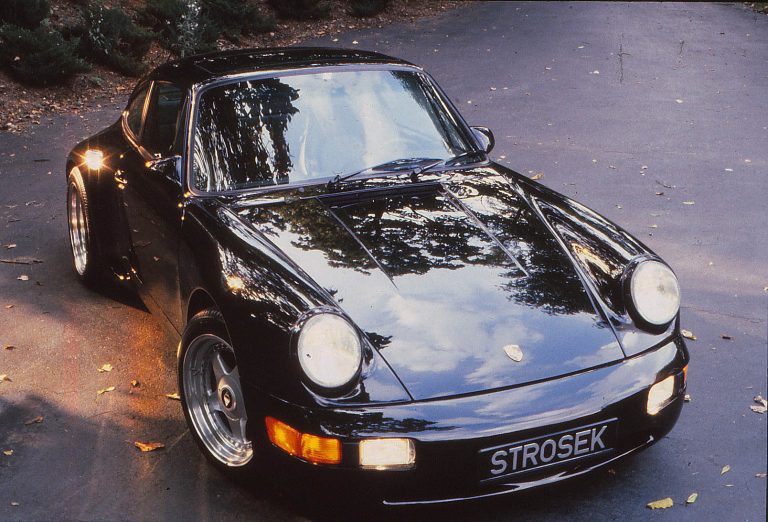
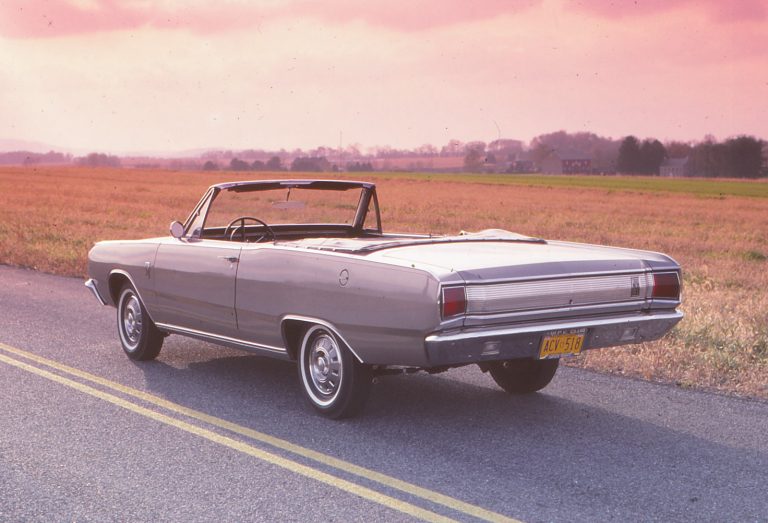

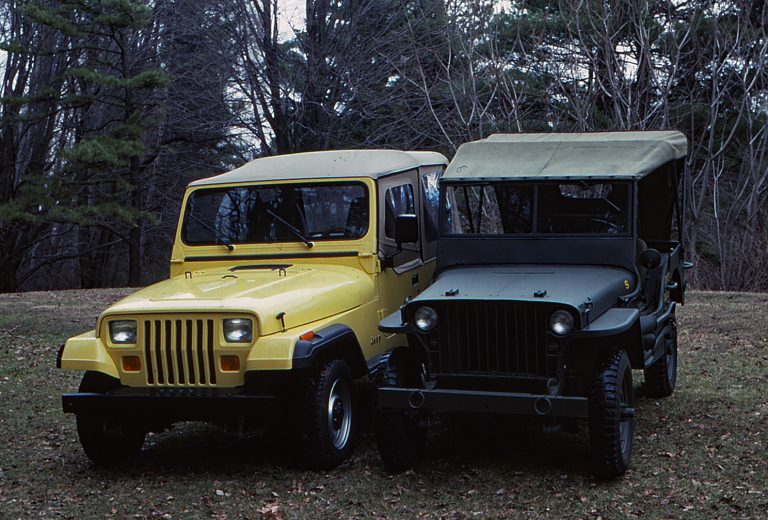
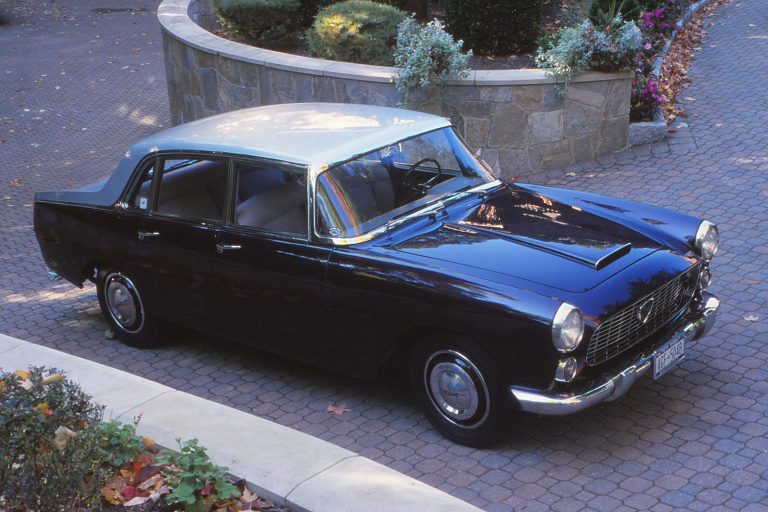
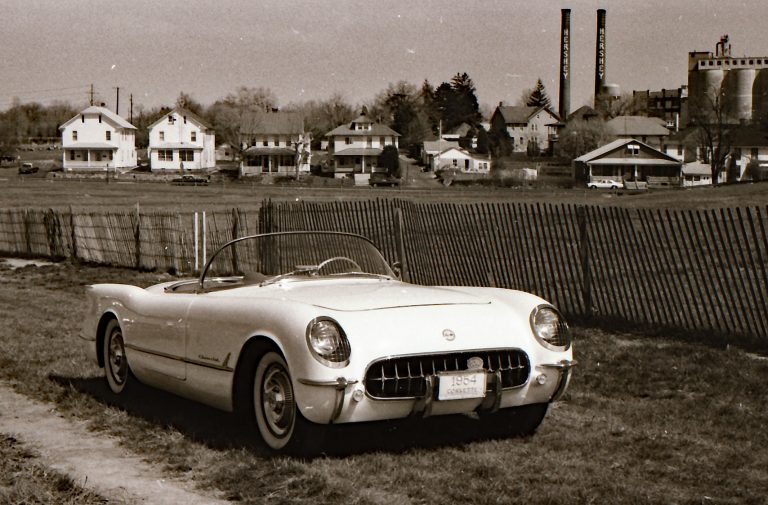
What a beautiful car. AC styling is excellent.